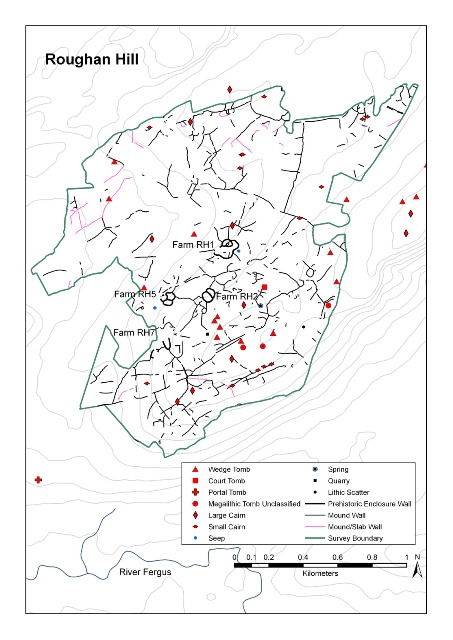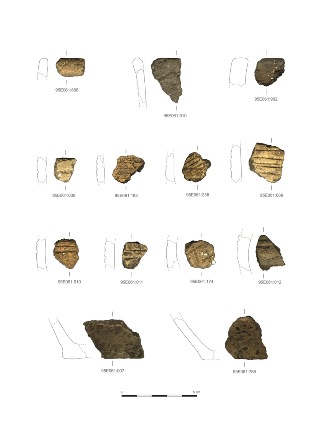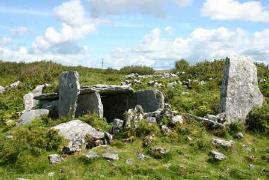-
Courses

Courses
Choosing a course is one of the most important decisions you'll ever make! View our courses and see what our students and lecturers have to say about the courses you are interested in at the links below.
-
University Life

University Life
Each year more than 4,000 choose University of Galway as their University of choice. Find out what life at University of Galway is all about here.
-
About University of Galway

About University of Galway
Since 1845, University of Galway has been sharing the highest quality teaching and research with Ireland and the world. Find out what makes our University so special – from our distinguished history to the latest news and campus developments.
-
Colleges & Schools

Colleges & Schools
University of Galway has earned international recognition as a research-led university with a commitment to top quality teaching across a range of key areas of expertise.
-
Research & Innovation

Research & Innovation
University of Galway’s vibrant research community take on some of the most pressing challenges of our times.
-
Business & Industry

Guiding Breakthrough Research at University of Galway
We explore and facilitate commercial opportunities for the research community at University of Galway, as well as facilitating industry partnership.
-
Alumni & Friends

Alumni & Friends
There are 128,000 University of Galway alumni worldwide. Stay connected to your alumni community! Join our social networks and update your details online.
-
Community Engagement

Community Engagement
At University of Galway, we believe that the best learning takes place when you apply what you learn in a real world context. That's why many of our courses include work placements or community projects.
Roughan Hill: Prehistoric social organisation
Prehistoric social organisation in western Ireland
Research on Roughan Hill (on the Burren) has focused on investigating the organization and dynamics of prehistoric societies at local, regional, and supra-regional scales within a theoretical framework which has its roots in anthropological studies of social organization. Chronologically, the research spans the Neolithic to the Early Bronze Age periods, but is particularly focused on the Chalcolithic and Early Bronze Age periods (c. 2500 – 1500 BC).
Research has been carried out on Roughan Hill since the mid-1990s. This began with an initial season of survey in 1994, the excavation of habitation site RH1 and trenches through various mound walls (ancient field walls) in 1995, four seasons of excavations at the Parknabinnia atypical court tomb between 1998-2001 (part-funded by the Royal Irish Academy) as well as the expansion of the survey and the excavation of additional sections through mound walls over the same seasons, a significant expansion of the survey in 2000 with a Heritage Council grant, and finally in 2008 as part of the Burren Landscape and Settlement INSTAR funded project – various specialist analyses (lithics, pottery, C14, etc) were carried out.
It is in the Chalcolithic (c. 2500-2000 BC) and Early Bronze Age (c. 2000 – 1500 BC) periods when Roughan Hill witnessed what seems to have been its busiest period. This is most visibly evidenced by the very dense concentration of wedge tombs on the hill and probably also by many of the cairns on the hill and in the immediate surroundings. Set amongst these ritual monuments, survey has revealed a cluster of at least four contemporary enclosed habitation sites and a network of ancient ‘mound’ walls that divide the hill into small fields. Excavation of Site RH1 produced Beaker pottery and one sherd of Bowl Tradition pottery, while very limited excavations at Site RH2 produced Vase Tradition pottery. Radiocarbon dates from RH1, RH2, and RH5 confirm that these habitation enclosures were occupied in the centuries on either side of 2000 BC. Several miles to the north, study of a seemingly contemporary landscape at Coolnatullagh suggests that in addition to this being a time of heightened activity on Roughan Hill, it was also a time of population expansion into more remote parts of the Burren.
The dating of the mound walls and other walls on the hill was a significant part of the work on Roughan Hill. The ancient walls were dated by excavating trenches through them and measuring divergent rates of bedrock dissolution underneath and adjacent to the ancient walls. Because the bedrock of Roughan Hill is soluble limestone it is lowered a small amount each year by rainwater. Where ancient walls occur, however, they protect to some degree the underlying bedrock from solution. This is because a good deal of the rainwater that falls on a collapsed ancient wall is deflected by the stones of the wall to either side and as the remainder of the rainwater trickles over and between the collapsed limestone rocks that formed the wall, the water becomes less acidic. The limestone bedrock under the wall is, therefore, sheltered from the full acidity of the rainwater and the end result is a higher ‘pedestal’ of limestone under the wall when compared to its immediate surroundings. Although there are various caveats and statistical ranges of variation that must be considered, in general, the higher the bedrock pedestal under a wall is, the older the wall should be.
The Chalcolithic and the Early Bronze Age were periods of significant social change across Europe. This research aims to explain the particularities of Roughan Hill and the surrounding region within a general theory of social organization while at the same time emphasizing the role of specific historical trajectories. The nature of the Roughan Hill evidence allows the central research focus on social organization to be approached along several lines of enquiry (evidence for the scale of residential groups and the pattern of settlement, the economic activities of communities, contact and exchange with groups farther afield, scale and focus of ritual, and the nature of status distinctions).
 |
|
| Chalcolithic and Early Bronze Age mound walls and habitation enclosures on Roughan Hill |
|
 |
Beaker sherds (and one Bowl Tradition sherd) |
 |
Drawing the section across a mound wall |
 |
A Chalcolithic wedge tomb on the Burren |
Principle Investigator
Carleton Jones (NUI Galway)
Funding
Royal Irish Academy
The Heritage Council
INSTAR
Related Publications (listed chronologically)
Jones, C. (2015) Dating ancient field walls in karst landscapes using differential bedrock lowering. Geoarchaeology – An International Journal.
Jones, C., T. McVeigh, R. Ó Maoldúin (2015) Monuments, Landscape and Identity in Chalcolithic Ireland. In Springs, K. (ed.) Landscape and Identity – Archaeology and Human Geography. British Archaeology Reports International Series 2709, 3-25. Oxford: Archaeopress.
Jones, C., O. Carey, C. Hennigar (2010) Domestic production and the political economy in prehistory: evidence from the Burren, Co. Clare. Proceedings Of The Royal Irish Academy Section C-Archaeology Celtic Studies History Linguistics Literature, 111C :33-58.
Jones, C. (2008) Burren Landscape and Settlement Heritage Council of Ireland. Unpublished INSTAR report.
Jones, C., Gilmer, A. (1999) 'Roughan Hill, a Final Neolithic/Early Bronze Age landscape revealed' Archaeology Ireland .
Jones, C. (1998) 'The Discovery and Dating of the Prehistoric Landscape of Roughan Hill'. The Journal of Irish Archaeology 9, 27-44.
Jones, C. (1997) 'The Final Neolithic/Early Bronze Age on the Burren, A Brief Review of the Evidence' The Other Clare 21.
Jones, C. (1996) 'A Prehistoric Farmstead in Kilnaboy' The Other Clare 20.
Jones, C., Walsh, P. (1996) 'New Discoveries on Roughan Hill'. Journal of The Royal Society of Antiquaries of Ireland 126, 86-107.



















